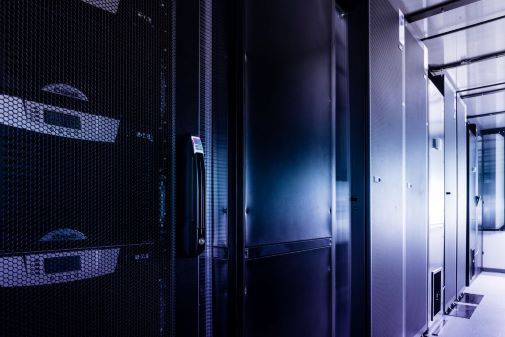Our increasingly online lives have a remarkably high energy cost and there is an untold story regarding a huge environmental impact , according to new research from the University of York.
 Can the transition towards digitisation and decarbonisation be mutually complementary?
Can the transition towards digitisation and decarbonisation be mutually complementary?
While the digital revolution is promising a greener future through technologies like artificial intelligence, the Internet of Things and cloud computing, researchers are now discovering there is a significant and unseen environmental challenge.
Crucial infrastructure
Data centres are highly energy-, water-, and land-intensive. While they are crucial infrastructure in powering the digital economy, their exponential development must not compromise net-zero goals and overwhelm natural resources. The transition towards digitisation and decarbonisation must be mutually complementary, not mutually exclusive.
This boom in data centres is even considered a core part of growth for the UK economy, as the government has highlighted artificial intelligence development as a strategic area of economic growth. These seemingly innocuous buildings, essential for everything from social media to supermarket data storage, are consuming vast amounts of energy. They are also contributing a surprisingly high percentage of global greenhouseh gas emissions.
Exponential growth
The York research conducted in collaboration with Singapore Management University and Durham University shows a critical paradox: the very infrastructure powering our "digital green" initiatives carries a substantial carbon footprint. As demand for internet services, virtual workplaces, and emerging technologies skyrockets, so too does the need for data centres, leading to exponential growth in the sector.
The Decarbonising digital infrastructure and urban sustainability in the case of data centres study has been published in the journal npj Urban Sustainability. It examines the decarbonisation and digitisation synergies and trade-offs of data centre development, particularly within the unique context of Singapore, a global digital hub with great AI ambition but faced with significant physical - energy, water, land limitations. These challenges are not unique to Singapore—cities like Dublin and Amsterdam have also imposed moratoria to manage the environmental strain of data centres. However, moratoria can severely damage investment flows and undermine the reputation of established data centre hubs.
Material footprints
As the UK accelerates its digital economy and artificial intelligence innovation, environmental impacts and associated social considerations must be accounted for.
Dr Felicia Liu explained: "This research bridges the gap between our perception of a virtual, low-impact digital world and its very real material footprint. The findings offer crucial insights and potential pathways for industry and policymakers to navigate the sustainable transition of the data centre sector, ensuring that our digital future is truly a green one."
Navigating transitions
Her research focused on analysing the key dimensions to navigating a sustainable digital transition. With her experience focused on Singapore, she highlighted the need for a balanced approach to juggle economic growth with minimising environmental impact and building resilience Dr Liu said: "Singapore's experience highlights the growing need for sustainable solutions, especially in densely populated urban environments".
The research identifies five interrelated dimensions that underpin sustainable data centre development. This includes:
- Innovation - including energy-, water-, and land-efficient data centre and chip designs, renewable energy solutions (including for land-scarce areas), effective and efficient retrofitting solutions, as well as responsible sourcing and waste management across supply chains
- Infrastructure - reliable and efficient energy, connectivity, and water infrastructure must be in place to support uptime. Additionally, supporting infrastructure such as transport links and general 'attractiveness' of a place is crucial in drawing and retaining talent
- Investment - an active market and a conducive regulatory environment to draw a diverse range of investors. Commitment to 'green' and 'sustainable' criteria can draw a broader range of investment
- Policy - clear, supportive policies in place to provide guidance and incentive to facilitate a sustainable transition of the data centre sector and the digital economy that it empowers. Disruptive policies such as moratoria may have an adverse effect on sustainable data centre development
- People - attracting and developing relevant talent—engineers, technicians, project managers—is crucial. All professionals in the data centre sector should understand how to enhance sustainability within their areas of expertise and collaborate across functions to support a holistic sustainability strategy.
The increasing use of AI is dramatically driving up energy demands in data centres because it is such a highly energy-intensive form of computing, according to Dr Liu.
Fragmented policy
She said: "the energy needed for computing services is growing exponentially - as economies compete in the AI race, it is vital we remember that this comes with an environmental cost."
However, the research shows that policies overseeing data centre sustainability are fragmented, and often only focus on energy usage and sourcing of data centres, while neglecting the environmental impact of the data centre supply chain.
Sustainable strategies
Singapore's experience shows what happens when ambition outpaces coordination. The UK has a chance to do better by putting place, people, and sustainability at the heart of its AI strategy.
As the UK develops its AI strategy, it is imperative that environmental concerns and scrutiny is built into the heart of the decision-making process. In light of the economic, environmental, and social synergies and trade-offs, a comprehensive approach to building a digital economy will ensure long-term, sustainable success.



.jpg)







